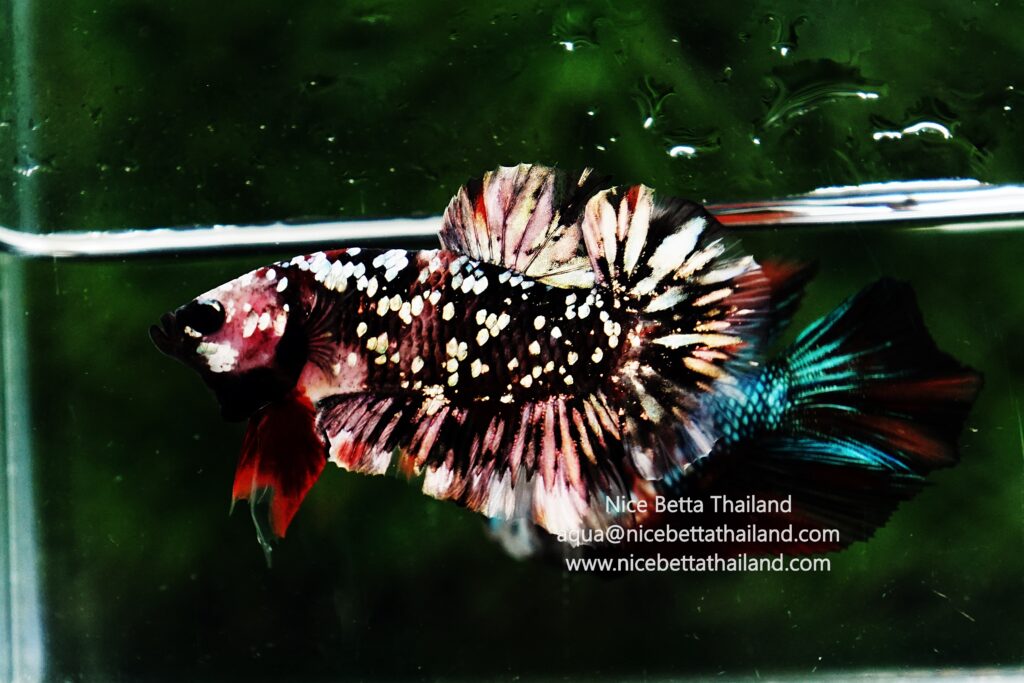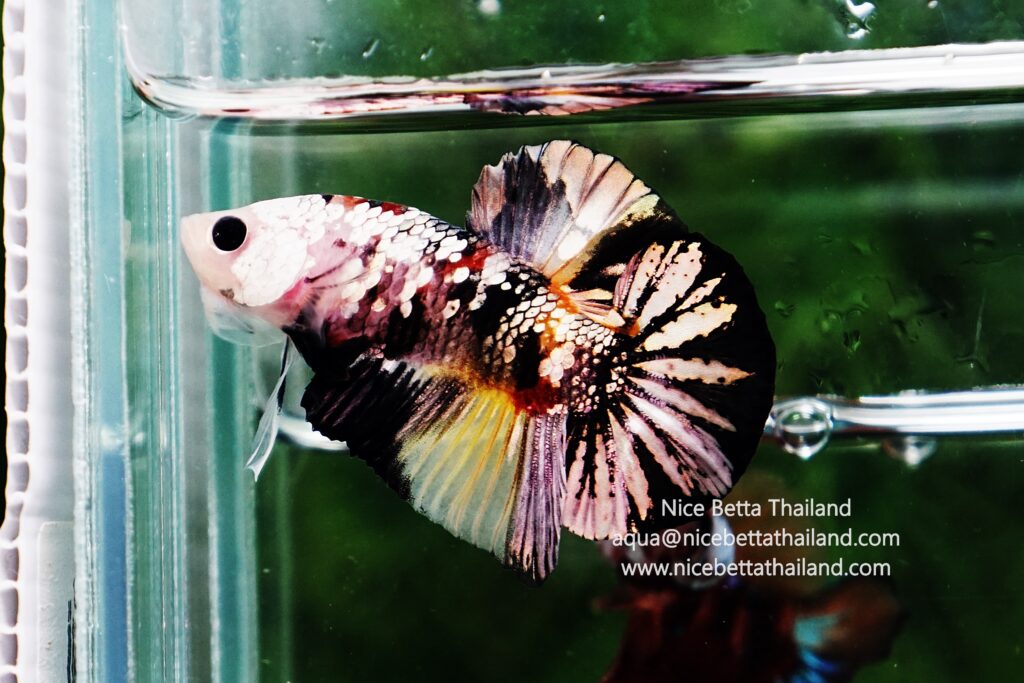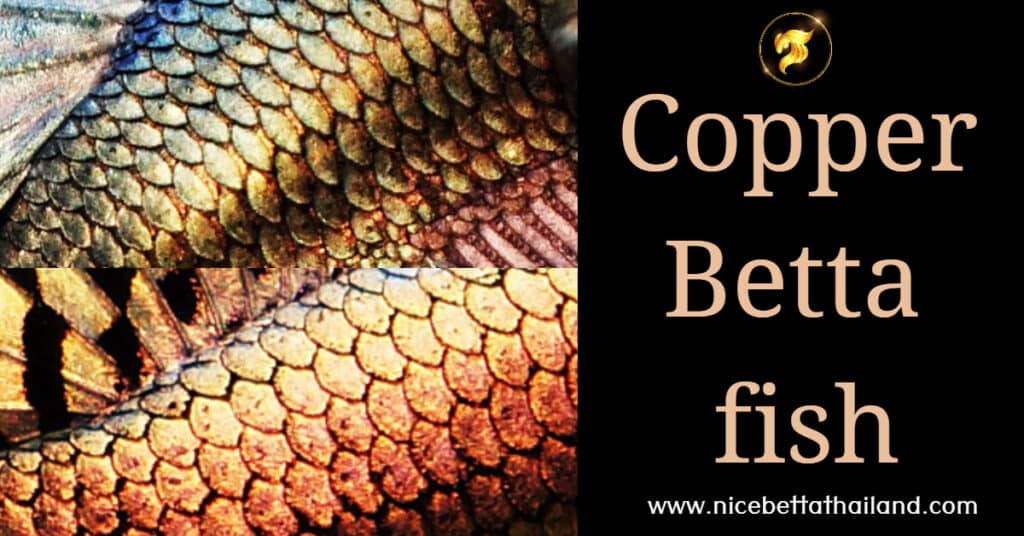Giant betta fish are one part of betta type you may want to try your hand at breeding giant betta fish. In this article we will discuss how to breed giant betta fish. There are few key things to understand before breeding bettas. Setting up the right courtship and spawning environment, getting the right pair, and a lot of monitoring is involved as well as having the right environment for the giant betta fry, the female, and the male after spawning.
Table of Contents
It Begins: Getting Ready to Breed Giant Betta Fish
Even if you already have a giant male and female betta pair that live together you will still need 3 tanks or at least 2 tanks with one of them being divided. The male and female will need to be separated into different tanks (preferably where they can’t see each other until the fry are moved into their own tank).
Once the fry are swimming out of the bubble nest and eating on their own, they are ready to be on their own. It is easiest to leave the fry in the breeding tank and remove the male giant betta to his own tank. Even if your male and female were previously housed together it is still best to slowly introduce them and observe their relationship and behaviors for a few days.

Falling in Love: Choosing a Breeding Pair of Giant Betta Fish
Choose a male and a female siamese fighting fish that have the characteristics that you want in their offspring. Each fish should be between 4 and 12 months old for ideal breeding. Choose a pair that are close in age and size with the female being slightly smaller than the male. Find a reputable retailer or breeder.
Avoid chain pet stores as they tend to only carry older betta fish that may already be older than the ideal breeding age. They are also often over or poorly bred so they can be sold cheaply. Since giant bettas are rare you may need to have your bettas shipped from a trusted betta fish store.

Setting the Mood: Giant Betta Fish Breeding Tank Setup
You will want to have at least a 10 gallon aquarium with a divider. The breeding tank should be placed in a quiet spot to offer your breeding pair and new parents some privacy. It is best not to use a filter when breeding betta fish especially those that build bubble nests. Offer at least one hideout per fish. This can be betta-safe plants or aquarium decor. Some male bubble nesters enjoy building their nest under something that floats like a leaf or floating decor. It gives their babies added security and reduces the anxiety of the giant betta dad.
If you don’t already use a water heater for your betta fish, now is the time. Stable temperatures are important for inducing breeding and spawning in betta fish. Do not use substrate in a breeding aquarium. This is important because eggs are often dropped as they are transported to the bubble nest. Avoiding substrate helps your fish retrieve any dropped eggs with ease.

Consummating the Relationship: How to Breed Giant Betta Fish
If you prepared for breeding your giant betta fish, found your pair, and set up your tank, you are ready to roll. Be patient and closely observe your pair without disturbing them. You can’t force them to breed so be patient. Offer high quality food in small amounts a few times per day. This is a great time to use safe nutritious live or frozen foods like bloodworms, daphnia, or brine shrimp.

Giant Betta Breeding Tips
Consider what type of big betta fish you are breeding:
- Wild giant bettas (betta anabatoides) are mouth brooders which means the males carry the eggs and fry in their mouth until they are ready for release.
- Giant betta splendens are bubble nest builders.
- Determine the type of giant bettas you have to understand the spawning process of your pair. Since most pet giant bettas are selectively bred, they don’t tend to be the wild type so they are more likely to be bubble nest builders rather than mouth brooders.
Knowing how to breed giant betta fish is only half of the challenge. You have to be patient, observant, and lucky enough to have a cooperative breeding pair of giant betta fish.
Breeding giant betta fish Summary
Although Giant Betta Fish are an interesting species, breeding them requires careful preparation of equipment — keep males and females in separate tanks (or with partitions) to avoid inappropriate interactions. Once the fish are comfortable with their equipment, slowly introduce them together, observing the pair’s behavior closely.
When selecting a betta fish breeding pair, it’s best to choose between a male and female between 4 and 12 months of age, and of similar size (the female may be slightly smaller). This will ensure you get fry with good potential. It’s also recommended to source fish from a reputable breeder, as fish from large fish stores may be too old or have been bred multiple times.
For a breeding tank, a tank of at least 10 gallons should be used in a quiet location with a partition or separate tank to provide shelter for each fish. It is not recommended to use an air filter as pairs will build their own bubble nests. Gravel or other substrate should not be used in the breeding tank to facilitate the fish’s egg collection and prevent them from falling onto the substrate.
When it’s time to breed, be patient and avoid disturbing the fish too much. Feed them quality food, such as egg yolk or a few earthworms. Choose fresh or imported betta-friendly food, such as micro-rae or pre-worms, to stimulate the fish to breed.
Finally, it’s important to observe and adapt to the type of giant betta you have. There are both “mouth-brooder” types, where the male holds the eggs in his mouth, and “bubble-nestor” types, where the male creates a bubble nest above the water surface. The most popular giant betta species are the bubble-nestor type.
FAQ: Breeding Giant Betta Fish
1. What is a giant betta fish?
Giant Betta Fish is a breed of Betta fish that has been developed from a normal Betta fish to be larger in size while still maintaining the behavior and temperament of a normal Betta fish.
2. What age should males and females be for breeding?
The ideal age is around 4–12 months, as this is the time when the fish are strong and fully sexually mature.
3. How do you know when a male is ready to mate?
Males are ready to start building bubble nests and display the behavior of flapping their fins to show off to females.
4. Why must males and females be separated before breeding?
Because betta fish have an aggressive nature, if they are brought together too quickly, they may fight and get injured or die.
5. What is the appropriate size of aquarium for breeding Giant Betta?
It should be at least 10 gallons (about 38 liters) in size to provide the fish with enough space and to reduce stress.
6. Is it necessary to use a water filter in the incubator?
It is not necessary because the air bubbles from the filter will destroy the bubble nest that the male has created for laying eggs.
7. What kind of food should I give before breeding?
It is recommended to feed fresh food that is high in protein, such as red worms, earthworms, or good quality imported food to stimulate the readiness of the reproductive system.
8. How do giant fighting fish lay eggs?
Most are “bubble nesters,” meaning they build bubble nests above the water, but some species can be “mouth brooders,” trapping their eggs in their mouths.
9. What should you observe during breeding?
You have to make sure that the male doesn’t attack the female too much and that the female is separated immediately after laying eggs to prevent them from biting each other.
10. After the fish lay eggs, what should you do next?
Let the male care for the nest and eggs until they hatch, then separate them and start feeding the fry such as tiny red worms when they can swim.
If our article Breeding giant betta fish was useful to you You can leaving a 5-star reviews for It’s an encouragement. For us make encourage us in our research. Research information about betta fish for to present useful information further

Reference: https://animalverse.social/members/0xa7171ebba801bd10a5ce7a061d6e80c044d0e075/activity/24523/
Also we have group talk about betta fish for sale and share any new tip take care information on Web3 socialFi group

Right now we have betta fish doctor help every bettas lover by top breeder in Thailand to cure or share more tip on Animalverse social
If your bettas fish sick or need tip to treat help or join event prize with AVC Token
Let’s join the group many top breeder will help to answers in betta fish community
More tip :
All of Betta Fish A Guide on Patterns, Color in the world
Stable betta fish genetic is important for breeding?
What the difference between crowntail with King crowntail
What the difference between male and female betta fish
The most expensive betta fish in the world.






